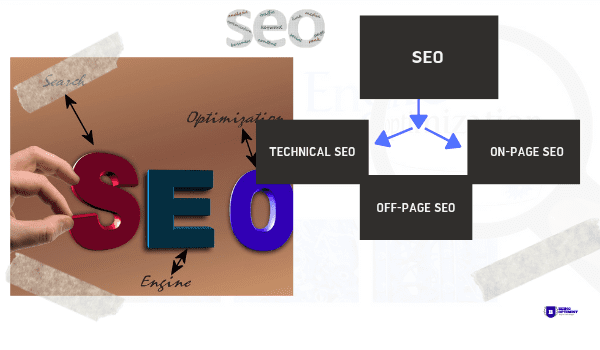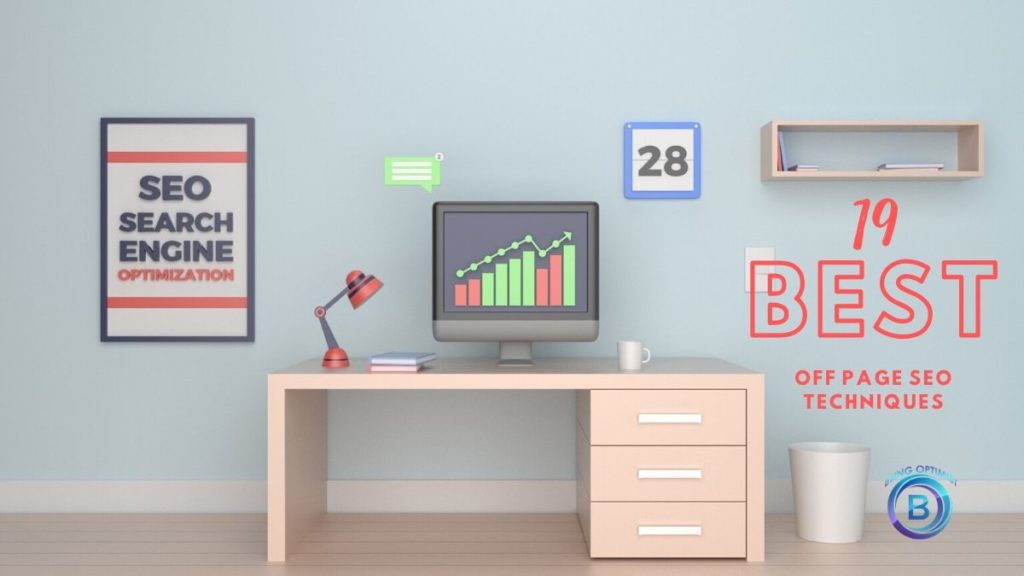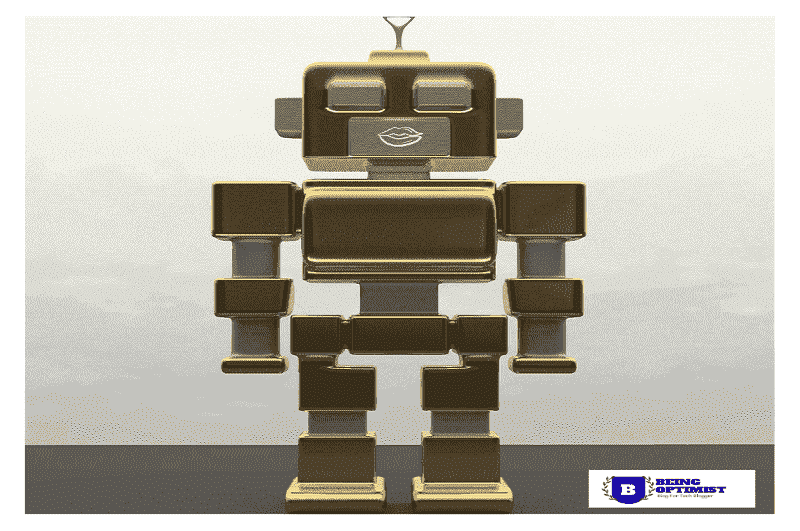The SEO or Search Engine Optimization is a process or technique used by SEO experts to increase the visibility of a web page in search engine result pages such as Google, Yahoo or Bing, etc., following Google guidelines,
When the web pages match with the guideline of Google algorithms like the quality design and content, then Google helps in indexing the web pages.
If it does not match and gets hints that someone is trying to rank the web pages using black hat SEO techniques, then it penalizes it.
Traffic that we get naturally in search engines is also termed an organic or non-paid optimization technique.
Is Search Engine Optimization Important To Rank A Website?
Yes, SEO is a vital part of internet marketing as we know that Google is the most popular search engine in the world, and then it is followed by Bing, Yahoo, and Yandex. People use Search engines to solve their specific problems.
For example, suppose you want to travel to the United States of America, but you do not have any idea where to go? So at that moment, what would you do? First of all, you would try to contact your friends or family member who has been to the USA. Am I right?
What would you do if you find that nobody close to you has been to America? Would you stop here?
No way. You would try to find alternatives.
Here, Search Engines play a vital role to solve all of your questions. For example, your query is to know the “Best places to visit in the USA.”
To find you would type your query within Google or any search engine. After typing, you would get the top ten results in this way:


Paid Search & Organic Search
Here in the above picture, based on your query, you have got the desired results. If you look cautiously on the searches, you would see that two types of results are shown to you. These are the paid and organic searches.
Now you may be wondering how search engines are filtering millions of websites and showing you only 10 web pages. It is due to search engine optimization, in short SEO. The 10 organic hyperlinks which you see here are properly SEO optimized.
Based on your queries search engine crawlers searches millions of website and according to the relevancy, display desired results on the first page of the search engine.
So, if you want your website to be visible in all parts of the world, then start optimizing your web pages for Search Engine Results Pages (SERP) using proper search engine optimization techniques.
Before diving into SEO or search engine optimization techniques, let us see the main difference between organic and paid search.
Difference between Organic and Paid Search
Organic search is free and comes naturally, that is determined by search engine algorithms, whereas the advertiser pays paid searches for listing on the search result page. Organics searches are also known as natural searches and to list webpages organically in the search engine on the first page you have to continuously do proper search engine optimization using various techniques which are permitted by search engines, specially Google.
SEO Techniques that are not authorized by search engines are termed as Black hat SEO and should be avoided. If it is found that you are doing Black Hat SEO, then you would be penalized by the Search engines. So, to avoid penalty, stick with White Hat SEO.
Different Types of Search Engine Optimization (SEO) Techniques
| White Hat SEO | Black Hat SEO |
| Legitimate techniques which are authorized by search engine comes under White Hat SEO | Illegitimate SEO techniques which are not authorized by Google or any search engines are Black Hat SEO |
| Strictly abide by Google’s guideline | Tries to exploits the weakness of the search engine algorithm to improve the ranking |
| Long term Impact | Short term. Search Engines penalizes those websites which follow black hat techniques |
| White Hat Seo techniques include: High-quality content, outreach influencer, speed, mobile friendliness, proper link building | Some of the Black Hat SEO techniques are cloaking, keyword stuffing, hidden text, link spam, etc. |
We have now got knowledge about White Hat Seo and Black Hat SEO. Now it is our turn to know about the various categories of Search Engine Optimization.
Categories of Search Engine Optimization

We can categorize Search Engine Optimization or Seo in three categories. These are:
- Technical SEO
- ON-Page SEO
- OFF-Page SEO
Let us see what are these.
1. Technical SEO (Search Engine Optimization)
Technical SEO is a bit like using special tools, such as SEO crawler tools provided by companies like Google, Bing, and Yandex. These tools help you closely examine your website to ensure it’s in great shape for people who search on the internet.
It’s like inspecting the ins and outs of a machine to make sure it runs smoothly. These tools check things like how quickly your web pages load, whether there are any broken parts (like broken links), and if everything is organized properly so that search engines can understand your website better. Just as mechanics use tools to fine-tune a car’s performance, these SEO crawler tools help fine-tune your website’s performance on the internet highway.
Some key aspects of technical SEO that these tools help monitor and optimize include:
I. Crawling and Indexing
Webmaster tools such as Google Search Console, Bing Webmaster, Yandex, or Netpeak Software’s SEO crawler tools allow you to observe how search engines crawl and index your website. You can submit sitemaps, view crawl errors, and assess the status of indexed pages.
II. Secured Socket Layer (SSL)
Google or search engines give extra attention to those websites which have enabled SSL certificates on their website. It gives more preference to the HTTPS website, instead of HTTP. So ensure to have an SSL certificate on your website for better rank in SERP.
III.Mobile Responsive
Search engines are becoming smarter day by day due to regular updates on the search algorithm. Search engine bots are so smart that during the crawl if it finds that a website is not mobile responsive, then it would not provide a ranking.
Google has already indicated that they would give preference and ranking to those websites which are mobile responsive.
IV.Page Speed:
Page speed is one of the essential ranking factors or signal in Search engines. If you want to enhance your website’s speed, you can do the given things:
- Choose Hosting, which is fast and reliable.
- Compress large image sizes
- Use minimum CSS
- Minimize HTTPS request
- Compress your website using GZIP
- Minify CSS, JavaScript, and HTML of your website
- Use a fast DNS provider
- If your website is made up of WordPress, then you can use caching plugins such as W3Super Cache to optimize your website.
V. Duplicity and canonical issue
Search Engines hate duplicate content. It is a good practice to avoid duplicate content because if it is not removed, then your website may not rank in the SERP. The reason for the duplicate content is due to the presence of different versions of a single website.
For example,
Suppose, if you have a website named www.beingoptimist.com. If the preferred version is not set, then search engines would consider the given website has four versions. These are listed below:
1) http://www.beingoptimist.com
2) htttp://beingoptimist.com
3) https://www.beingoptimist.com
4) https://beingoptimist.com
Due to the above 4 different versions of the same website, search engines like Google, Bing or Yahoo would consider these websites different and would consider a duplicate content or may your website would be penalized, if the problem is not solved. This problem is fixed using Canonicalization techniques.
VI. XML Sitemaps
You can submit XML sitemaps to help search engines better understand the structure of your website and the priority of different pages.
VII. Site Health
These tools provide information about issues that might affect your site’s
What Is Canonicalization?
It is a process of driving traffic to one preferred domain of a particular website from all of its four versions. It is the way of selecting the best URL out of several choices available.
How to Fix Canonical Issues?
After knowing that a website has four versions of URLs, you would be wondering how to fix it. Right?
Do not worry, I am here to help you out, and I would let you know how you would fix and set the preferred version of your website.
To fix the issue, you can follow any of the given below strategies. These are:
- Using the canonical tag
To set your preferred version of the website, you would have to insert the given below code within the head tag of the HTML element:
<link rel=” canonical” href=” https://beingoptimist.com/″>
When you would insert the above-given code in the header section of a website that would tell the search engines to index the webpages according to the given URL set in the canonical tag.
- 301(Permanent) redirect
301 redirect is the best way to solve the canonical issue. So for permanently solve the problem, you would have to insert the given code in the .htaccess file.
Redirect from WWW to non-WWW
RewriteEngine on
rewritecond %{http_host} sitesbay.com [nc]
rewriterule ^(.*)$ http://sitesbay.com/$1 [r=301,nc]
Redirect non-WWW to WWW
RewriteEngine on
rewritecond %{http_host} sitesbay.com [nc]
rewriterule ^(.*)$ http://www.sitesbay.com/$1 [r=301,nc]
Note: Never forget to set your preferred domain at Google webmaster Tools.
V.Creation of XML Sitemap:
An XML site map is an XML file that holds the full details of a website. It helps the search engine to understand what your website is about and helps in indexing the web pages. It helps search engines to understand where the webpage is.
If you are using WordPress, then you can use Yoast SEO Plugins which create a sitemap of a website automatically, or you can use the sitemap generator tool.
VI. Consider AMP:
AMP means Accelerated Mobile Pages. It is an Open Source framework that was developed by Google in collaboration with Twitter. It was mainly developed for the mobile version and helped the web pages to load fast on mobile by reducing the extra HTML and CSS code.
AMP is essential for loading web pages fast in mobile devices and also helps in enhancing usability and reducing the bounce rate and increasing the ranking of immobile devices.
VII. Add structured data markup to your website
Structure Data Markup is a specific code that helps you to markup elements on a webpage to help search engines to understand the website’s content in a better way. It is also known as Schema Markup. Once a search engine understands your webpage data. It would display your website content in search engines more attractively
Using structured data, you can easily add rich snippets. For example, you can add a star rating, reviews, and products’ prices with the help of structured data.
VIII. Register your site with Google Search Console, Bing Webmaster Tools, and Yandex Webmaster
Google Search Console, Yandex Webmaster, and Bing Webmaster Tools are free tools from Google, Bing, and Yandex, respectively that allow you to submit your website to their search engines for crawling. When your website is ready, you should submit your website in these free tools so that you can easily monitor your website’s performance. Moreover, submit your website’s sitemap to these webmaster tools so that Google, Bing, and Yandex search can crawl your site to display in search results.
2. ON-Page SEO
ON-Page SEO is a strategy that is used to optimize a webpage and its content by inserting a keyword relevant to your industry or niche in the title, heading, Meta tags, and so on. This activity is done on the webpage, which is to be published. The On-page SEO activities include are:
I.SEO friendly URL:
It is considered a good practice to use an SEO-friendly URL. To make a URL SEO friendly, you have to keep it short and small.
For example:
Never Use the given below two URLs:
https://beingoptimist.com/ p=123/
https://beingoptimist.com/ 8/8/18/cat= SEO/pageid=890.html
II.Use Keyword
Always try to use keywords in the webpage’s URL. For example, https://beingoptimist.com/SEO.
III.Use keywords at the beginning of the title
The title tag is a significant HTML tag and is a vital On-page SEO factor. So always utilize this tag for inserting the heading. Do remember your title tag should contain the Keyword for which you are optimizing your webpage. Keywords more closely to the title tag more preference you would get in search engines.
IV. Use H1 heading for your Post title
Always use the H1 tag for the post title. If you are using WordPress or CMS, then your work becomes more comfortable because CMS by default always puts the title in the H1 tag.
V.Never forget to ADD modifies in your title tag
Add modifiers such as “Best”. “2019” “Beginners” etc. It would help you to rank high for the target keyword.
VI.Use Images or Videos:
Never forget to use images or videos in your web pages. Using multimedia helps in user engagement and makes the post more attractive.
VII.Use the H2 tag for creating subheadings
Always include the target keyword on the subheading. Use at least once.
VIII.Use the keyword in the first paragraph
Always use your target keyword within the 100 words of the first paragraph of your article.
IX.Mobile friendly
Your website should be mobile-friendly. If your website is not mobile-friendly, then google would penalize you. Mobile-friendly websites are preferred first for search indexing.
X.Internal linking
Internal linking helps in reducing the bounce rate. So try to put 2 or 3 relevant internal linking on your article.
X.Outbound links
Try to use relevant outbound links on your article. It would help Google to understand that your article is full of quality information.
XI.LSI Keyword
Scatter LSI keyword in your article. LSI stands for latent Semantic Keywords, which are the synonym of your target keyword.
XII.Never Forget to Optimize images
Always use the keyword in the “ALT” attribute of the images and reduce the size of the images using an online image compressor or WordPress plugin, if your website is made up of WordPress.
XIII.Content Is King
Make your content longer and more engaging. The longer the content there is more chances that your webpage would rank high in search engines. Try to write content with over 1500 words
You can check how well optimized the On-Page SEO of your site, using special SEO tools. For example, one such tool is the SEO Page Checker by Sitechecker. This tool will help you optimize your content and find any technical SEO errors. Check page load speed and get a detailed list with optimization tips.



